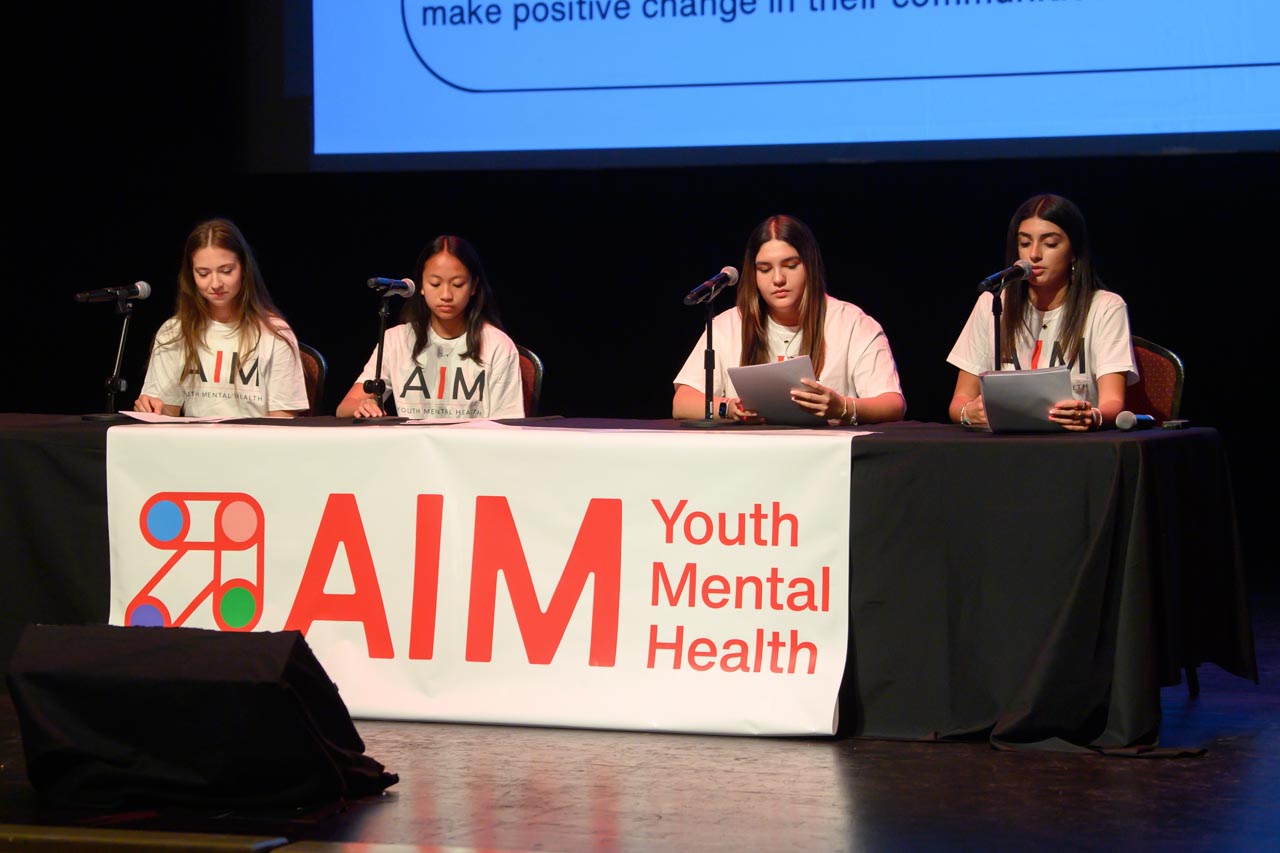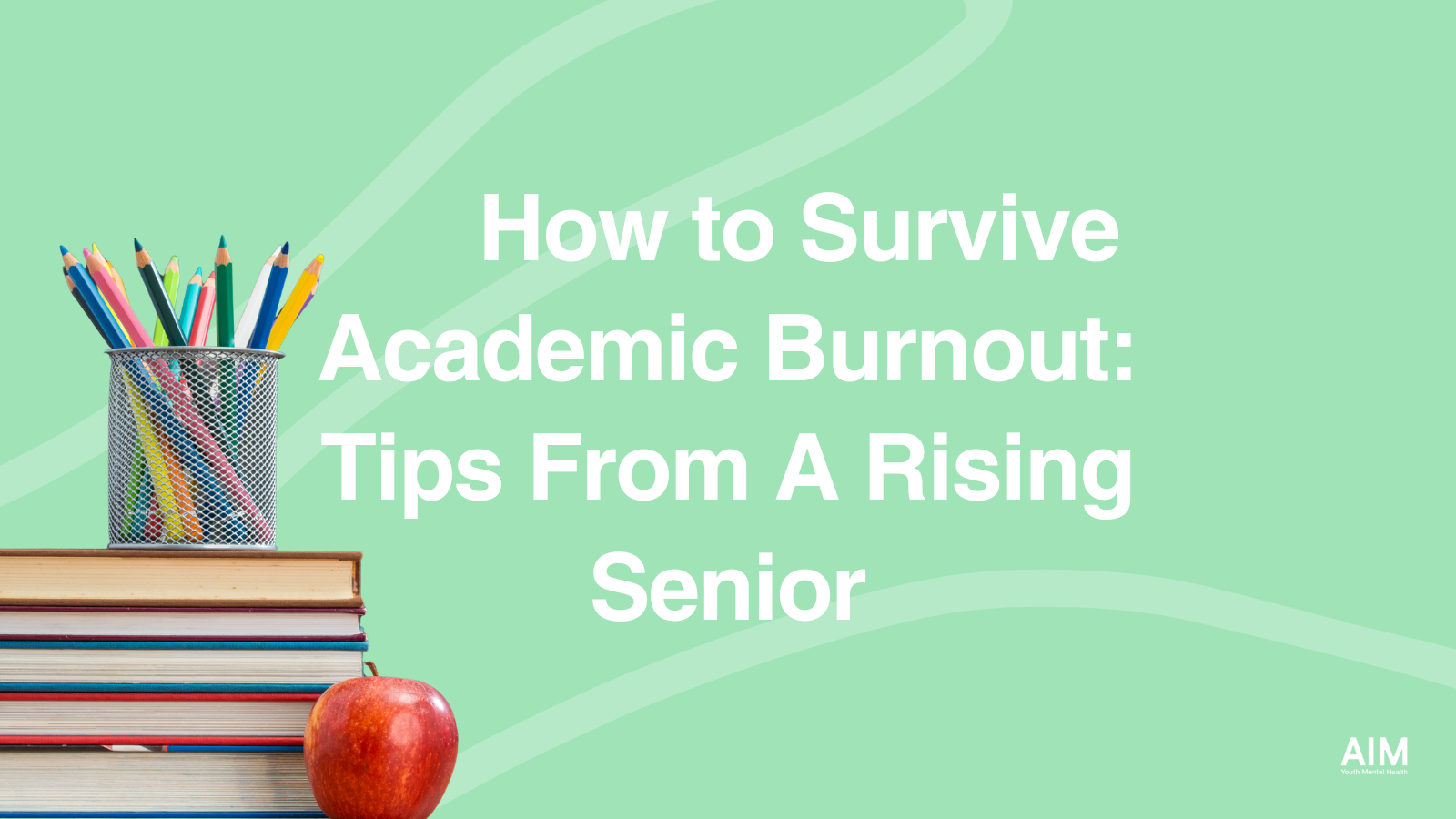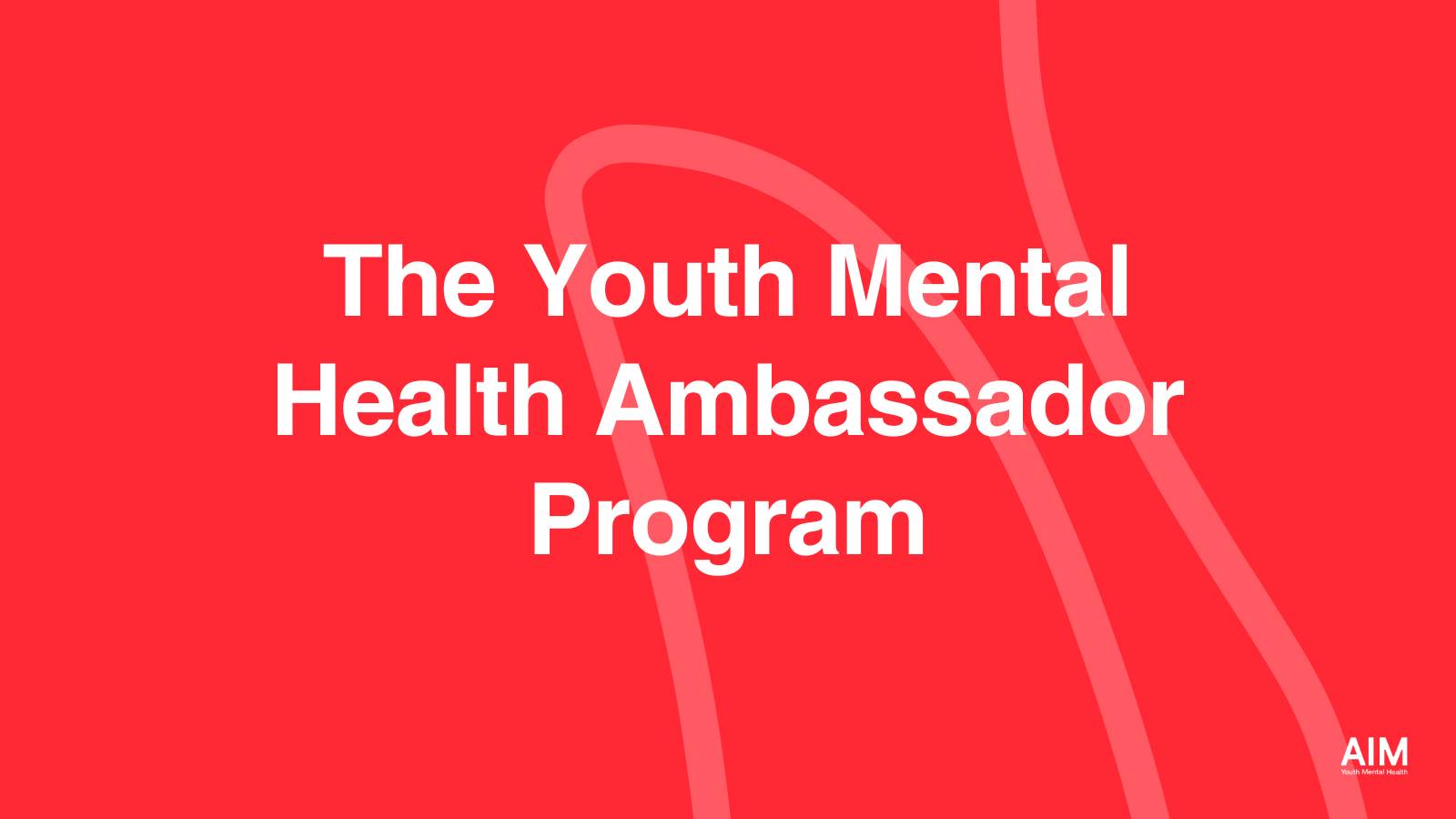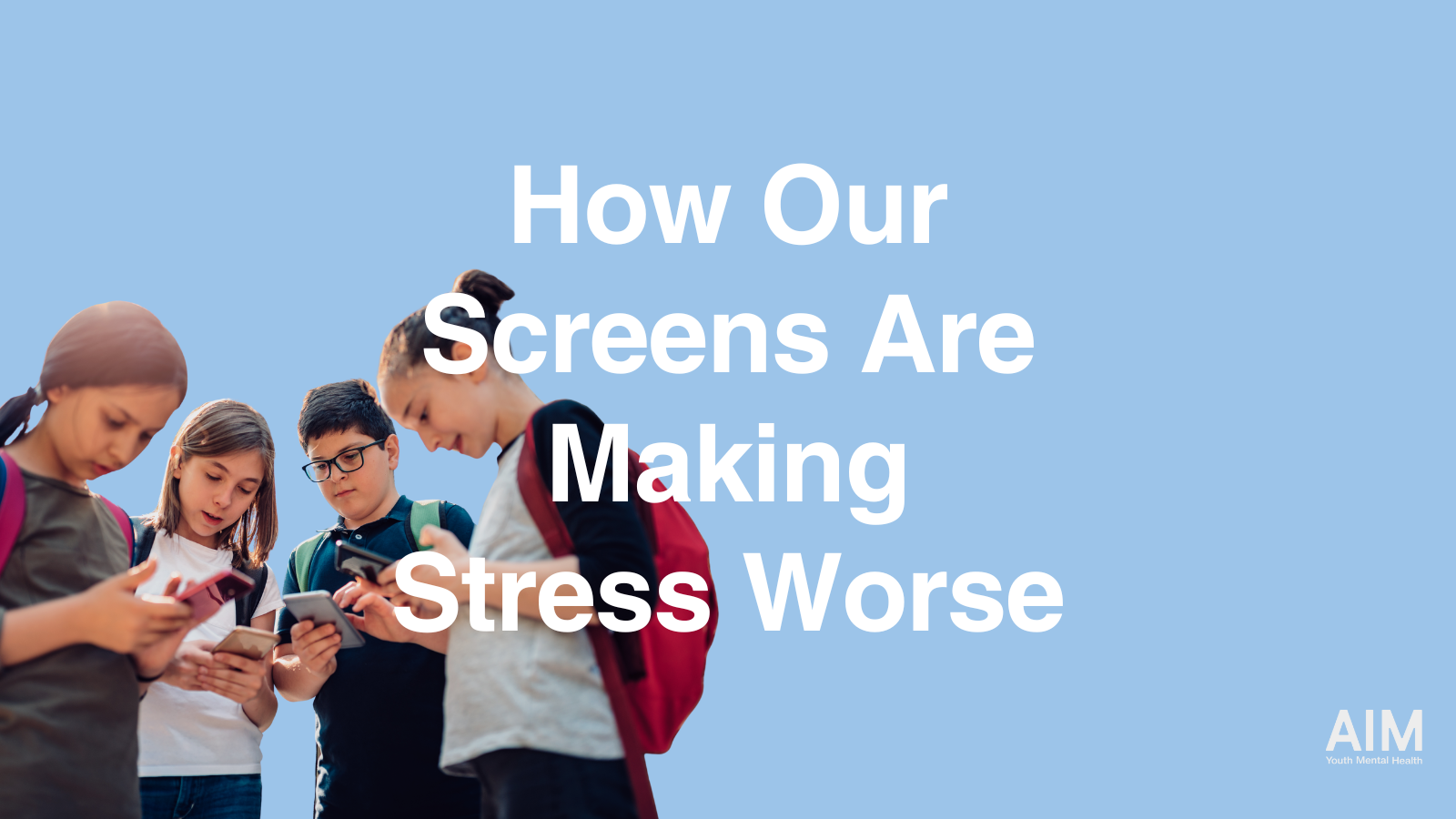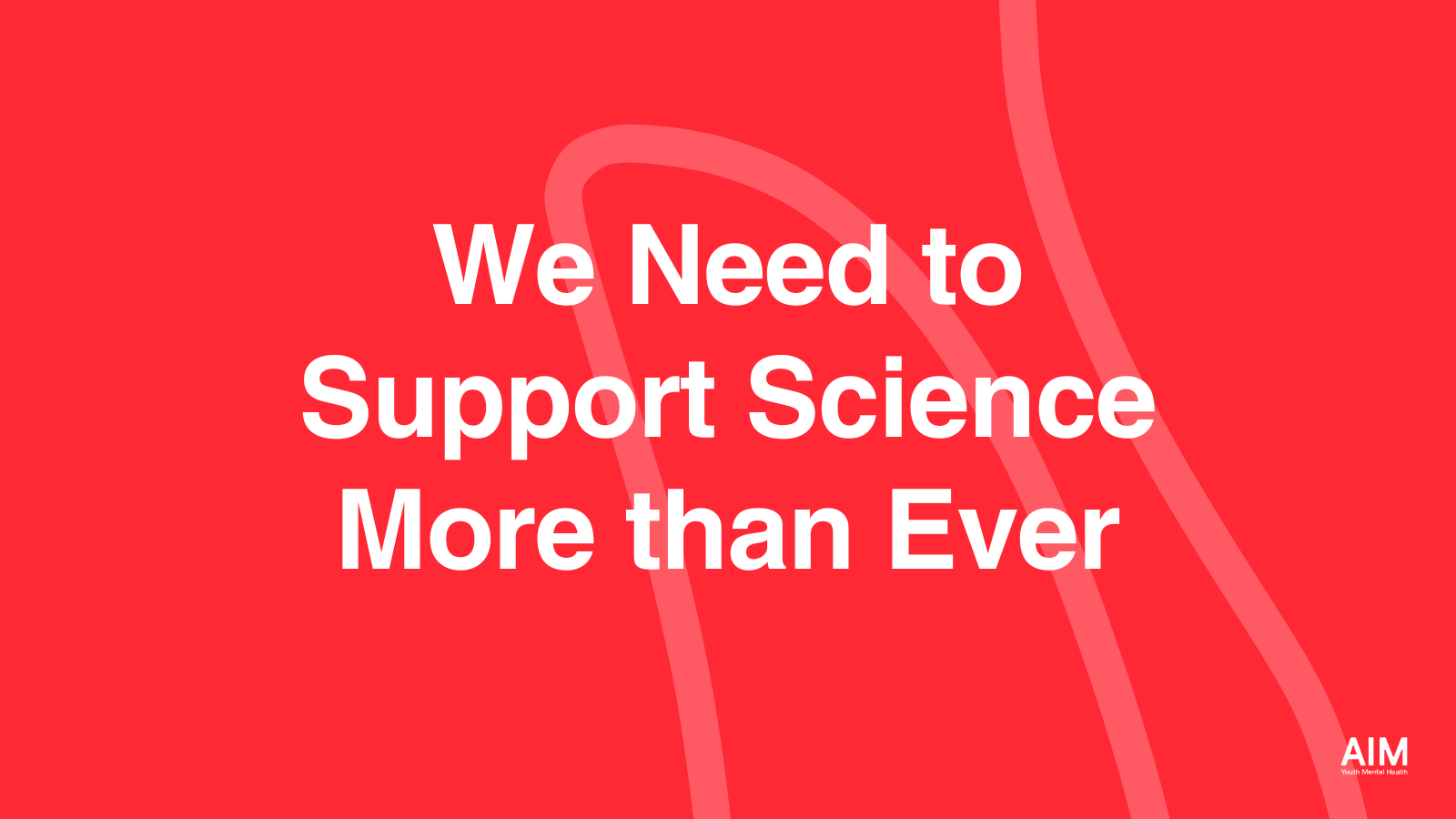Last year, we heard the message loud and clear: the youth of California are self-aware, articulate about their mental health needs, and deeply motivated to spark systemic change. This year, their insights are sharper, their demands more urgent, and their vision more united.
From January to March 2025, AIM conducted another year of their signature program, the AIM Ideas Lab, a groundbreaking youth-led research project focused on the mental health of California teens.
This isn’t just another report. It’s youth-driven data, shaped by teens for teens. And these teens are offering critical insight for parents, educators, and anyone who cares about the next generation… because they’re not just aware of the mental health crisis, they want to be a part of the solution.
And their message is unequivocal: we aren’t facing a crisis of awareness. We’re facing a crisis of inaction.
What Is the AIM Ideas Lab?
The AIM Ideas Lab is based on a model called Youth Participatory Action Research (YPAR)—a method that empowers youth and teens to lead research and advocate for change within their own communities.
Students learned how to conduct surveys, analyze both data and narratives, and make recommendations to adults in positions of power, including schools and policymakers.
This year, 1,623 California teens completed a survey about their mental health. The survey included both multiple-choice and open-ended questions, giving students the chance to share not just what they were feeling, but why.
The Real Mental Health Crisis Is Not What You Think
Teens continue to report unprecedented levels of stress, anxiety, and burnout, but they also understand where it’s coming from. Academic pressure still reigns as the top stressor for California teens, followed closely by lack of sleep, high parental expectations, and a relentless schedule that leaves little time to breathe, let alone reflect.
In one Ideas Lab session, a student described the day-to-day experience of their peers as: “Wake up, stress out, push through, burn out. Repeat.”
This isn’t just about over-scheduling or college pressure. Students are pointing to a culture of performance that devalues rest, creativity, and emotional regulation. It’s a system that rewards productivity over presence, and they’re asking adults to rethink what success actually means.
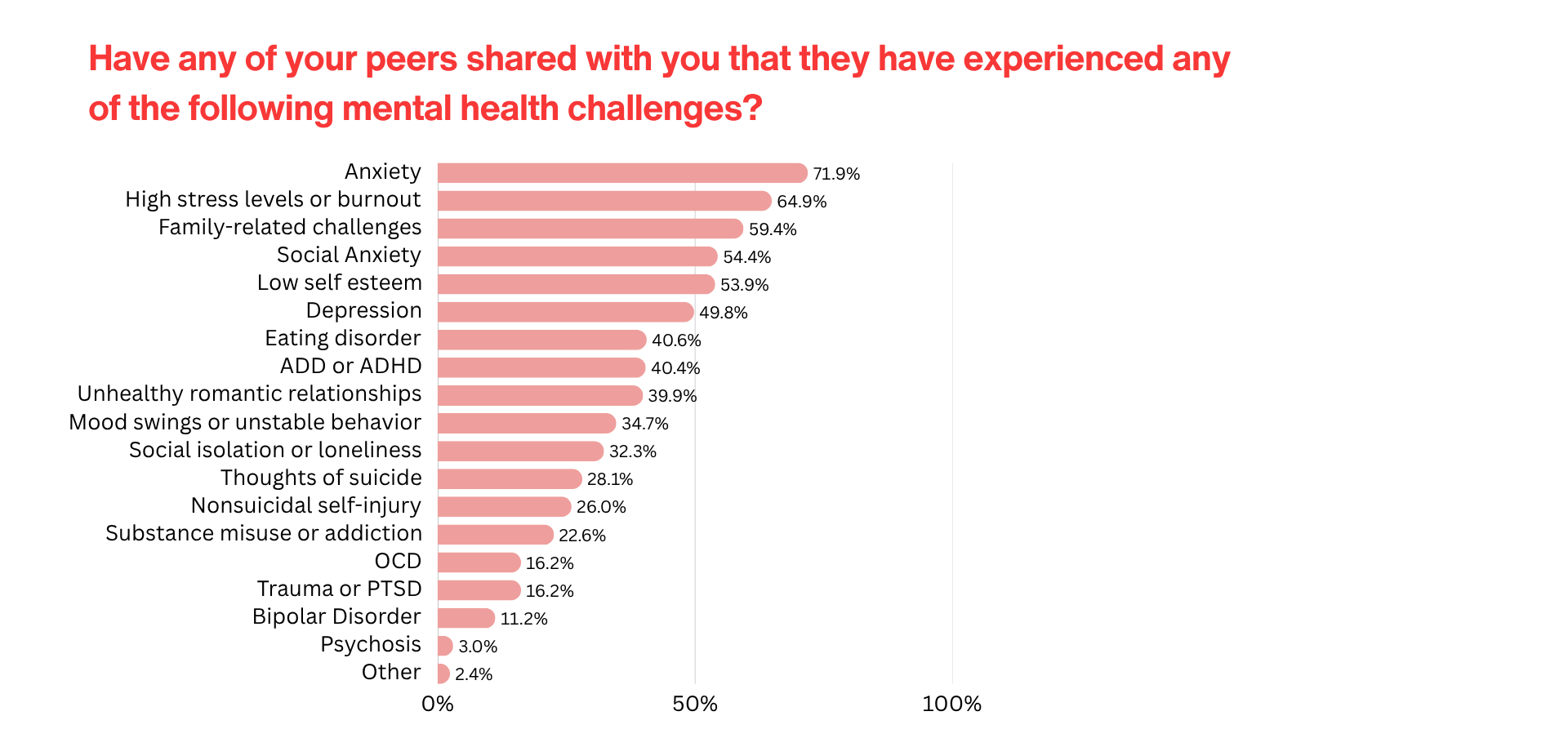
What Did Teens Reveal? 5 Key Insights Parents Should Know
1. Mental Health Challenges Are Widespread (And Often Hidden)
Over 63% of teens said they feel overwhelmed at least once a week, with the highest stress levels found in 11th graders and female students. Despite this, many suffer in silence, unsure of where to turn or how to ask for help.
2. Anxiety, Burnout, & Family Issues Top the List
The top mental health concerns among teens include anxiety (71.9%), stress/burnout (64.9%), and family-related issues (nearly 60%). Nearly half of youth report struggles with depression (49.8%), while around 40% cite concerns with eating disorders, ADD/ADHD, and unhealthy romantic relationships, underscoring a wide range of challenges that require targeted support.
3. Teens Support Each Other, But Don’t Ask for Help Themselves
While 85% of students feel confident helping a friend through a mental health challenge, only 16% feel comfortable seeking help for themselves. Fear of judgment and stigma are still the primary barriers to help-seeking behaviors.
4. School Support Systems Aren’t Being Used (For Fear of Stigma)
Although schools often offer counseling and wellness resources, only 11.6% of students said they’re likely to use them, and nearly two-thirds feel hesitant. Although 44.4% know where to access support, fears of judgment, embarrassment, and confidentiality concerns prevent many from reaching out, demonstrating the need for schools to address these issues to reduce stigma and increase utilization of available resources.
5. Support Needs to Be Personal, Confidential, and Youth-Led
The data shows that students want anonymous ways to ask for help, programs that reflect their lived experience, and youth-led campaigns and speakers who talk openly about mental health in ways that feel real (aka ditching the clinical jargon).
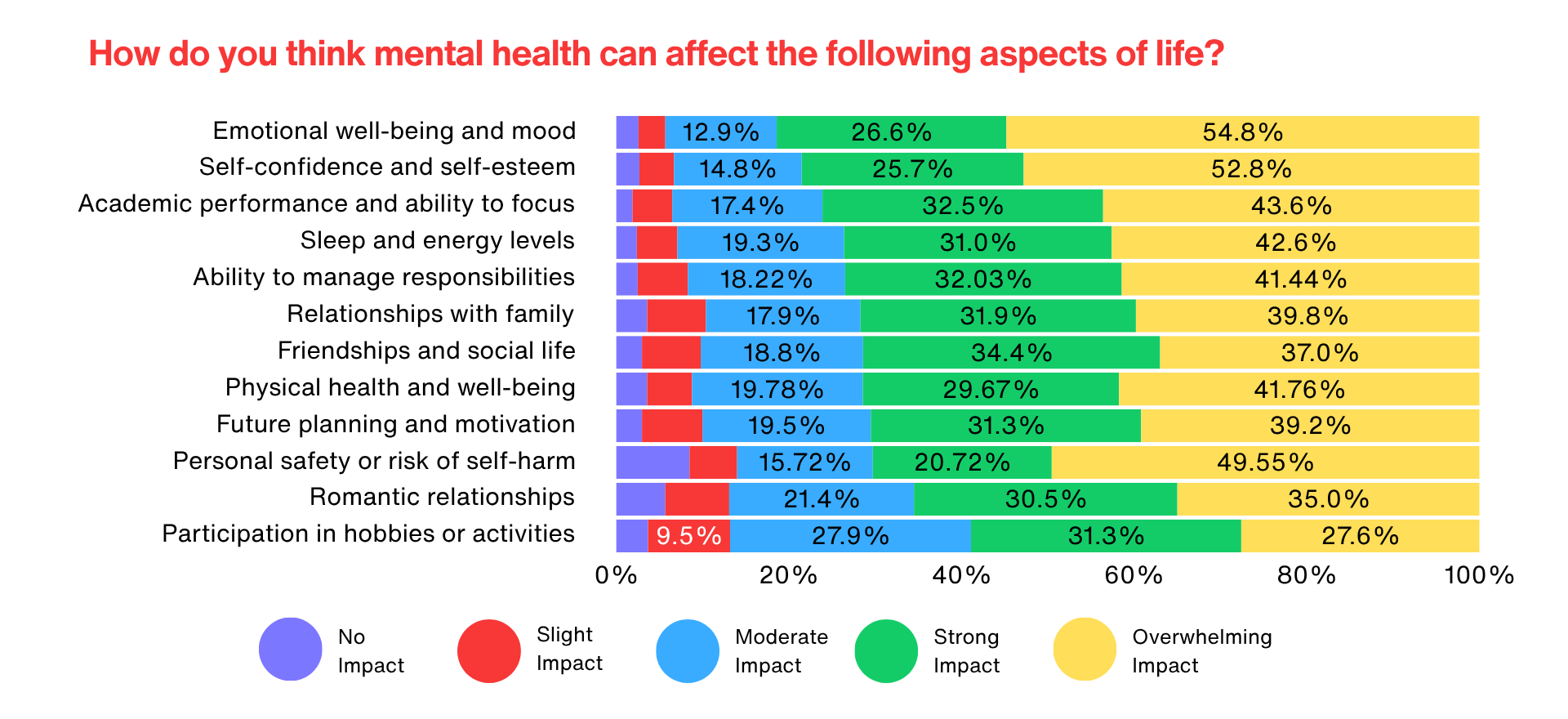
What’s Changed Since Last Year… And What Hasn’t
While the core stressors remain consistent, this year’s cohort showed a growing capacity to think systemically. Their recommendations went beyond venting and dove into root causes and implementable solutions.
In 2025, students offered:
- More nuanced critiques of school culture and its effects on mental health
- Concrete, low-cost ideas for school-based support
- A clear demand for culturally responsive resources
They also showed a growing sense of solidarity: students from vastly different counties shared almost identical experiences, proving that this isn’t a localized issue. It’s a statewide epidemic.
Despite growing awareness and conversations around mental health, the stigma around asking for help remains entrenched. 75% of students said they know what it means to care for their mental health, but only 38% felt comfortable asking for help when they needed it.
Even more telling? Students say they’re more likely to talk to a friend than a teacher, counselor, or parent. As one teen put it, “It’s not that we don’t want help. We just don’t trust the systems offering it.”
There’s a deep disconnect between who teens trust and where resources are currently invested. Mental health resources that don’t feel safe, accessible, or culturally relevant won’t get used.
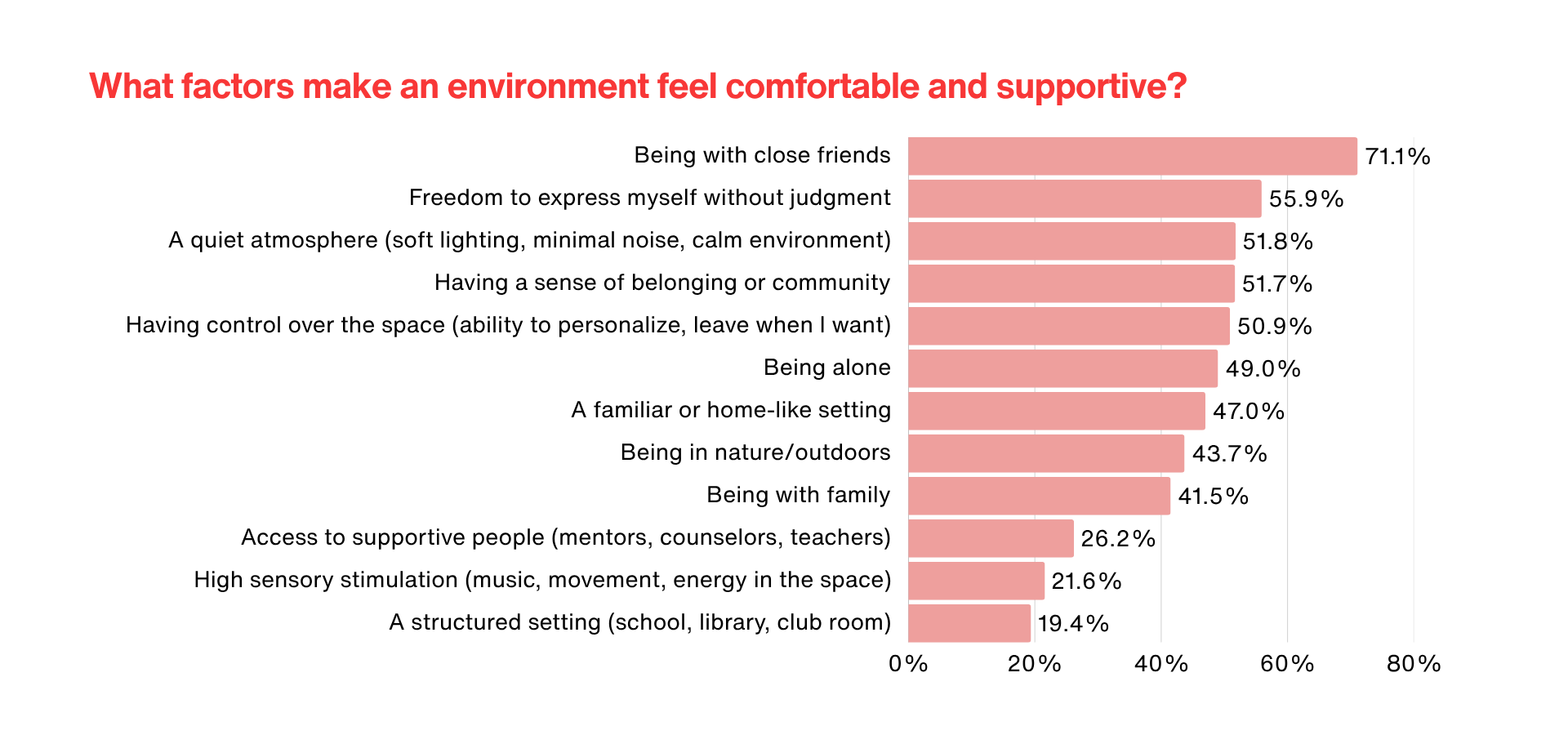
What Can Parents and Schools Do?
Students aren’t vague about what they want. They’re asking for:
- More teachers who understand trauma and mental health
- School counselors who reflect their communities and cultures
- Restorative justice over punitive discipline
- Mental health days that are treated with the same legitimacy as sick days
And most of all, they’re asking to be taken seriously. “We keep getting told that this is just what high school is like,” said one student. “But maybe it shouldn’t be.”
Some of the clear, actionable, recommendations for parents and schools that students made include:
1. Normalize Mental Health Conversations
Talk about mental health like you talk about physical health. Normalize stress, anxiety, and therapy as part of being human. Schools can help by regularly featuring mental health education in classrooms and assemblies.
2. Offer Anonymous Support Options
Teens want safe, judgment-free ways to ask for help. Schools can provide confidential digital forms or drop boxes for students to share concerns and get connected to support—no pressure, no stigma.
3. Strengthen Peer Support
Many students turn to friends first. Schools can host short workshops to teach students how to support one another and recognize when it’s time to involve a trusted adult.
4. Target Support by Age and Gender
Older students—especially seniors—reported higher levels of distress, and female students face more internalized struggles, like anxiety and eating disorders. Tailoring mental health support by age and demographic can make resources more effective and accessible.
5. Let Teens Lead
When teens lead the conversation, their peers listen. Parents and educators can amplify youth voices by supporting teen-led mental health campaigns, where students share stories, break stigma, and inspire others to speak up.
As one student put it, “If you want us to show up and learn, we need to feel safe and seen first.”
Schools remain both the biggest stressor and the most hopeful solution in students’ lives. Over 80% of students said school was the number one place they experienced stress—yet it’s also the place where meaningful support systems could be implemented fastest.
Students want mental health to be woven into the fabric of education, not treated as an afterthought. This doesn’t necessarily require massive budgets. It requires a shift in priorities.
So, What Now?
The message from California’s teens is clear: They’re ready to talk. They need support. And they want to be part of the solution.
As a parent, educator, or community member, you have a vital role to play in creating a culture where young people feel seen, supported, and empowered to thrive. The AIM Ideas Lab has shown us that the mental health revolution is already happening—and California teens are leading it. They know what they need. They’ve said it. Now it’s time for adults to act.
Here’s where to start:
- Listen without dismissing: If a student says they’re overwhelmed, believe them.
- Create teen-informed solutions: Involve youth in designing the very systems meant to support them.
- Rethink school culture: Prioritize rest, creativity, and connection as much as academic success.
- Shift from awareness to action: Awareness is step one. But students are asking: what comes next? Let’s make sure we have an answer.
Be a leader within your community to actualize these recommendations, send a youth in your life the opportunity to participate in AIM’s Ideas Lab next year, or donate to AIM to help us continue to fund the groundbreaking research that shapes the next generation’s mental wellness.
____________________________________
About the Author
Meadowlark Monaghan (she/hers) is a consultant using her knowledge gained as a mental health professional to act as a liaison between brands, creators, + online communities with the field of psychology and mental health. She also co-hosts the personal development podcast, Thoughts May Vary. Her work has been seen with Madhappy, Local Optimist, The Mayfair Group, Lonely Ghost, AIM Youth Mental Health, NAMI San Diego and more.
